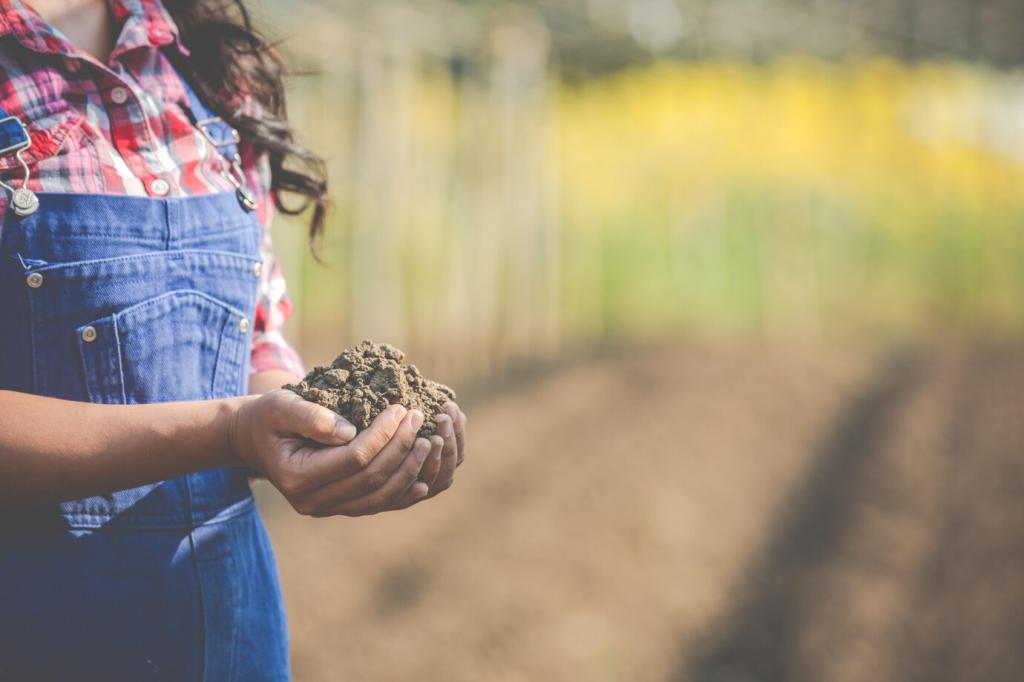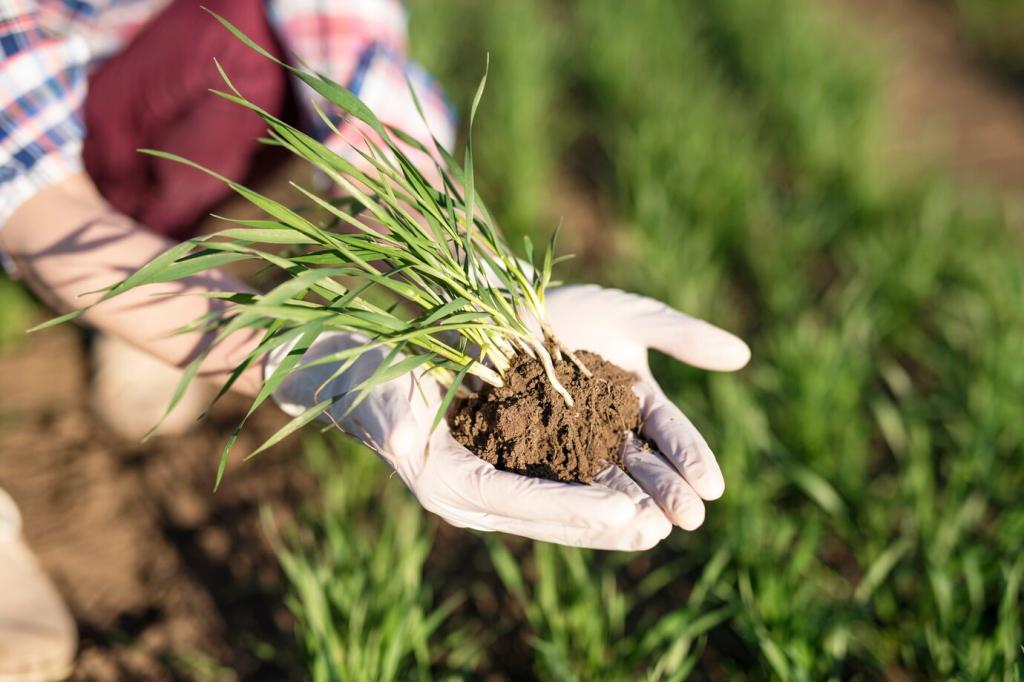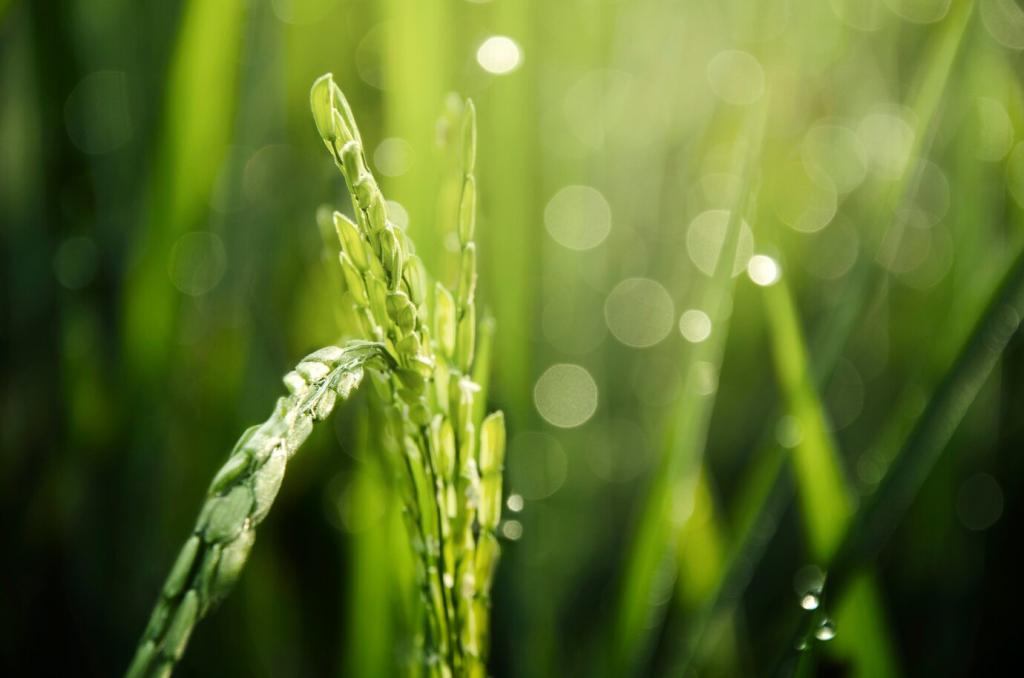
Urban Vertical Farming Innovations
Urban vertical farming is transforming the face of agriculture by integrating cutting-edge technologies and sustainable practices into city environments. This modern farming approach allows for efficient cultivation of crops within high-density urban centers, minimizing resource consumption while maximizing yield. This page explores the most significant innovations driving the rapid evolution of urban vertical farming and how these developments are reshaping food production, environmental sustainability, and urban living.
Automated climate control systems have revolutionized the way vertical farms manage the environment within their structures. By collecting real-time data on temperature, humidity, CO2 levels, and light intensity, these systems allow for precise adjustments that create the perfect growing conditions for each crop. The integration of sensors and AI-driven algorithms ensures consistency and minimizes human error, resulting in healthier plants and higher yields. With climate challenges becoming more prominent, such automation provides both stability and predictability in crop production, making vertical farms resilient in the face of urban environmental changes.
Smart Farming Technologies
Advanced LED Grow Lights
Advanced LED grow lights represent one of the most significant leaps in vertical farming innovation. Unlike traditional light sources, LEDs offer customizable light spectrums, allowing farmers to fine-tune wavelengths to suit different plant growth stages. They consume significantly less electricity than conventional lights and generate less heat, reducing cooling requirements and further lowering energy bills. The flexibility and efficiency of modern LEDs not only support year-round production but also enable vertical farms to produce crops of higher nutritional value and better flavor.
Smart Lighting Control Systems
Smart lighting control systems have made it easier than ever to maintain the ideal lighting conditions for crops while conserving energy. These systems use sensors and programmable logic to adjust light intensity, duration, and color dynamically in response to plant needs and ambient conditions. They often integrate with other environmental controls, ensuring that plants always receive just the right amount of light for optimal growth. By automatically dimming or switching off lights when not needed, smart systems add another layer of efficiency to urban agriculture’s sustainable ambitions.
Solar Integration and Hybrid Solutions
Urban vertical farms are increasingly exploring hybrid lighting solutions that combine high-efficiency LEDs with solar-generated power. Solar panels installed on rooftops or building facades harness renewable energy, which can be stored and redirected to power grow lights and climate systems. These integrated approaches significantly reduce dependence on grid electricity, lower operational costs, and minimize the carbon footprint of urban agriculture. As technology advances and solar becomes more accessible, the synergy between renewable energy and LED lighting holds tremendous promise for the future.

Recirculating Hydroponic Systems
Recirculating hydroponic systems have become a cornerstone of water-efficient urban farming. These systems allow crops to grow with their roots immersed in a nutrient-rich solution that continually circulates, eliminating the need for soil and drastically reducing water consumption compared to conventional farming. As the same water is recycled through the closed-loop system, very little is lost to evaporation or runoff. This not only conserves water but also prevents contamination of local waterways, supporting a cleaner urban environment.

Aeroponics for Water Efficiency
Aeroponics takes water conservation a step further by growing plants in air and misting roots with a fine spray of nutrient solution. This approach uses up to 90% less water than traditional soil-based cultivation, making it especially suitable for resource-strapped urban locations. Aeroponics delivers nutrients directly to roots, promoting rapid growth and allowing for higher plant densities. Maintenance and monitoring are simplified, and the system’s efficiency significantly contributes to the overall sustainability of vertical farm operations in dense city environments.

Rainwater Harvesting and Recycling Systems
Rainwater harvesting has emerged as an eco-conscious addition to urban vertical farms, capturing rainwater from rooftops and directing it to storage tanks for later use in irrigation and cleaning. When paired with advanced filtration and recycling systems, harvested rainwater can be purified and reused throughout the facility, further lowering freshwater demand. This approach not only reduces reliance on municipal water supplies but also builds resilience against droughts, supporting self-sufficient food production in the urban landscape.
Modular stacking systems allow for customizable farm layouts that adapt to various building shapes, sizes, and available vertical space. These systems use lightweight, movable racks that support multiple tiers of crops, which can be adjusted or expanded easily as demand grows. The versatility of modular designs enables urban farms to fit seamlessly into vacant lots, warehouses, and even high-rise buildings. With careful planning, these systems make it possible to multiply growing area many times over without increasing a farm’s physical footprint.

Crop Diversity and Customization
Heirloom Varieties and Niche Crops
Vertical farms offer the precise control needed to cultivate heirloom vegetables, rare herbs, and niche crops that may be difficult to grow outdoors. These unique varieties often command premium prices in markets and restaurants, supporting both culinary innovation and biodiversity. Urban farmers are experimenting with everything from edible flowers to exotic greens, meeting the demands of chefs and health-conscious consumers. This adaptability provides city dwellers access to flavors and nutrients not often found in supermarket varieties.
Crop Rotation and Mixed Planting
Crop rotation and mixed planting strategies allow vertical farms to support soil and plant health while diminishing the risk of disease outbreaks. By growing different crop species side by side and rotating plantings throughout the year, farmers can break pest cycles, maintain nutrient balance, and continually refresh their product offerings. Sophisticated vertical farming setups make it possible to instantly adjust crop plans in response to market trends, optimizing production without risking long-term soil depletion.
Personalized Crop Recipes
With the help of data analytics and controlled environments, vertical farmers are crafting personalized crop recipes adapted to the preferences and nutritional needs of local communities. By adjusting light spectra, temperature, humidity, and nutrient delivery, they can optimize crops for higher vitamin content, better taste, or longer shelf life. This customization extends to growing specialty produce for hospitals, schools, or specific dietary requirements, ensuring that urban agriculture remains both innovative and socially relevant.

Previous slide
Next slide

